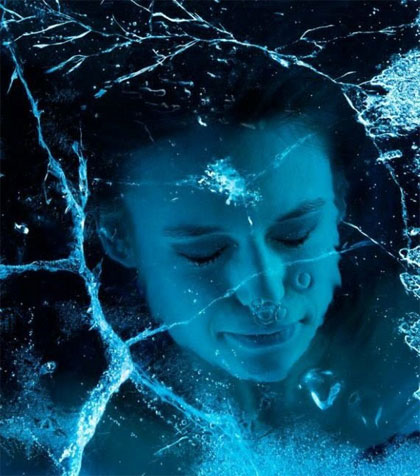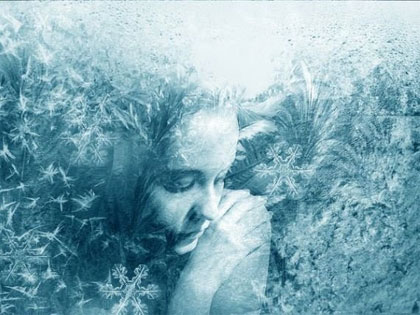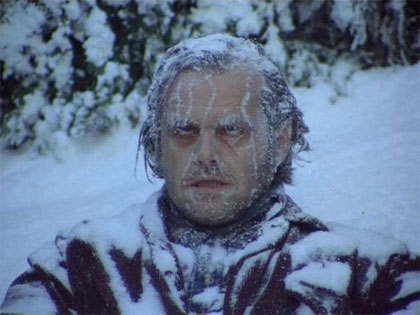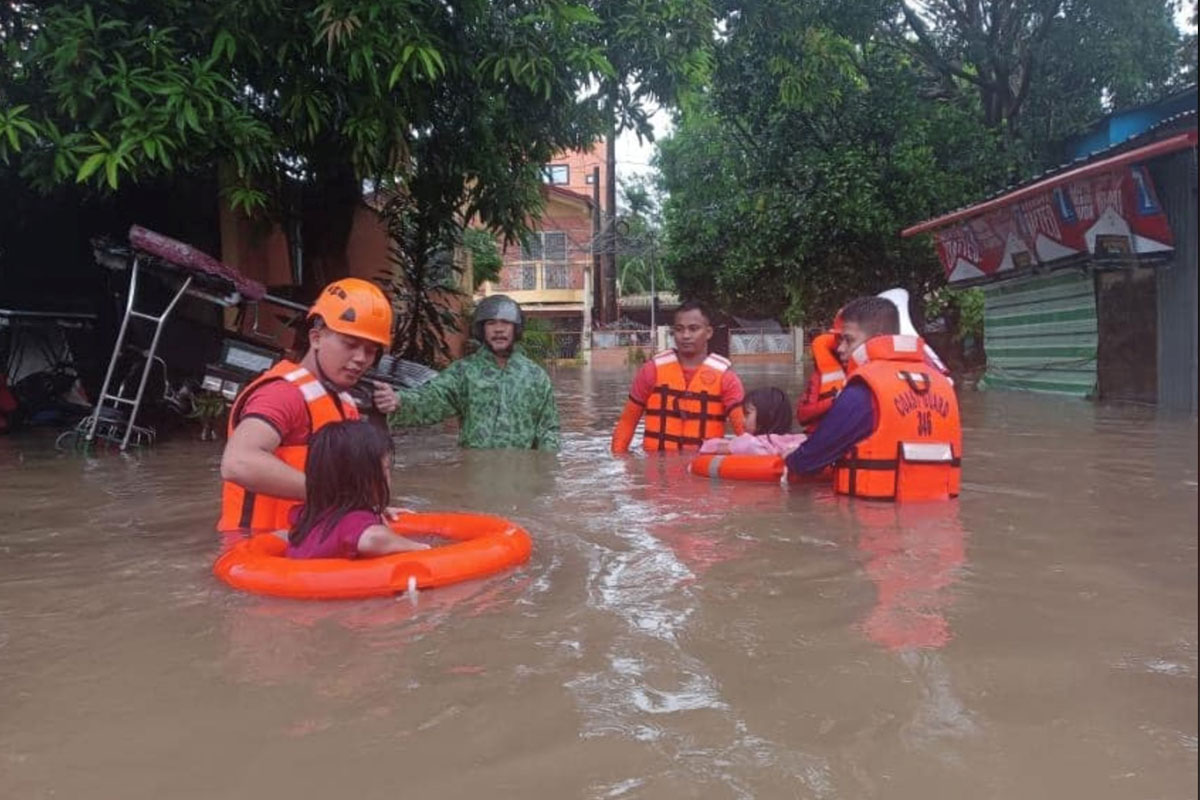
Bizarre Tales of People Frozen Alive and Then Brought Back to Life
Brent Swancer April 29, 2021
The human body is an amazing thing, to the point where it almost seems like the last true frontier of science. For as much as we know, there are plenty of things that leave us baffled, spanning many cases of what have come to be seen as medical miracles. These are the cases in which people have pulled off amazing feats of survival or have defied every fact we think we know, and have challenged our perceived knowledge of our very bodies. Among such amazing stories are those people who have been frozen solid, declared dead, yet have managed to bounce back to return to the world of the living as if nothing has happened.
One of the most amazing stories of survival after being frozen solid comes to us from the country of Norway. In 1999, 29-year-old Swedish radiologist Anna Bågenholm was on a skiing trip to the Kjolen Mountains, taking a break from her medical residency at the Norwegian city of Narvik, studying to become an orthopedic surgeon. On this day she was with two colleagues named Marie Falkenberg and Torvind Næsheim, and all of them were experienced skiers, but things were about to take a turn for the harrowing. During one run down a slope that she was very familiar with, Anna lost control, falling down to go careening head-first through the ice of a frozen stream. At the time the water was extremely cold, crusted with a thick layer of ice, so her friends immediately tried to pull her out, but she had been trapped down under the ice, with only her feet protruding, and they could not get her out no matter what they did. Luckily she was still conscious at first and had managed to find a pocket of air under the ice, but her bizarre ordeal was just starting.
 Anna’s companions called authorities, with two rescue teams being sent, but they were unable to reach the location in a timely fashion due to the remote area and the lack of an available helicopter. 40 minutes went by with no help, after which Anna lost consciousness and suffered circulatory arrest brought on by extreme hypothermia, her body temperature plummeting by the minute. By the time she was actually pulled out of the ice and put onto a helicopter to be transported to the Tromsø University Hospital, she had been in the freezing water for 80 minutes. At this point she was described as “frozen solid,” she wasn’t breathing, her heart had stopped, and she was clinically dead, her body temperature at a mere 13.7 °C (56.7 °F). Mads Gilbert, head of the emergency medical department would say of her condition:
Anna’s companions called authorities, with two rescue teams being sent, but they were unable to reach the location in a timely fashion due to the remote area and the lack of an available helicopter. 40 minutes went by with no help, after which Anna lost consciousness and suffered circulatory arrest brought on by extreme hypothermia, her body temperature plummeting by the minute. By the time she was actually pulled out of the ice and put onto a helicopter to be transported to the Tromsø University Hospital, she had been in the freezing water for 80 minutes. At this point she was described as “frozen solid,” she wasn’t breathing, her heart had stopped, and she was clinically dead, her body temperature at a mere 13.7 °C (56.7 °F). Mads Gilbert, head of the emergency medical department would say of her condition:
She has completely dilated pupils. She is ashen, flaxen white. She’s wet. She’s ice cold when I touch her skin, and she looks absolutely dead. On the ECG [electrocardiogram], which the doctor on the helicopter has connected her to, there is a completely flat line. Like you could have drawn it with a ruler. No signs of life whatsoever.
Despite this, the medical teams would not give up on her, with more than a hundred doctors and nurses working tirelessly in shifts, although the overall prognosis was not good. Not only was she clinically dead, but no one had ever survived such a low body temperature before, yet it was hoped that perhaps the extremely low temperatures had perhaps slowed her metabolism down and preserved her brain function in a sort of suspended animation. Her blood was pumped through a heart-lung machine and slowly warmed, and miraculously the next day, over 24-hours after she had fallen through the ice, her heart suddenly jumped back to life. Doctors were amazed, it was unprecedented, but she was not out of the woods yet, as her heart was not steady and she still remained more or less brain dead. Then, after 10 days of constant care, Anna Bågenholm woke up, and although she was at first paralyzed from the neck down, she was actually conscious. Over a period of several months, Anna underwent intense rehabilitation, the paralysis went away, and she made a complete recovery. Today, Anna works in the very same hospital where she was saved, her story a modern medical miracle that has been discussed in numerous medical journals, as well as written of in medical textbooks, and it has changed the way doctors approach cases of extreme hypothermia.
 Amazingly, there have been other cases similar to the plight of Anna Bågenholm. In 1980, 19-year-old Jean Hilliard was driving in rural northwestern Minnesota, on her way home from her parents’ home near the town of Lengby. At some point along the way, her car skidded off the road into a ditch near the White Earth Indian Reservation, and she was forced to get out and walk through brutal cold and snow in fierce temperatures approaching -22° F, wearing nothing but a coat, mittens, and cowboy boots. She headed for a friend’s house nearby, but didn’t make it, collapsing into the ice and snow just around 15 feet from the house. It would not be until the next day that Jean was found by the friend, Wally Nelson, meaning she had spent the entire night lying out in the open in lethally frigid temperatures. She was described as “frozen stiffer than a board,” her body completely rigid, displaying no reaction, and Nelson assumed that she was dead. When she arrived at the hospital, her skin was too frozen and hard to even get a needle through, and a doctor described her as “completely solid, just like a piece of meat out of a deep freeze.”
Amazingly, there have been other cases similar to the plight of Anna Bågenholm. In 1980, 19-year-old Jean Hilliard was driving in rural northwestern Minnesota, on her way home from her parents’ home near the town of Lengby. At some point along the way, her car skidded off the road into a ditch near the White Earth Indian Reservation, and she was forced to get out and walk through brutal cold and snow in fierce temperatures approaching -22° F, wearing nothing but a coat, mittens, and cowboy boots. She headed for a friend’s house nearby, but didn’t make it, collapsing into the ice and snow just around 15 feet from the house. It would not be until the next day that Jean was found by the friend, Wally Nelson, meaning she had spent the entire night lying out in the open in lethally frigid temperatures. She was described as “frozen stiffer than a board,” her body completely rigid, displaying no reaction, and Nelson assumed that she was dead. When she arrived at the hospital, her skin was too frozen and hard to even get a needle through, and a doctor described her as “completely solid, just like a piece of meat out of a deep freeze.”
Medical teams went to work trying to revive her, but it was more of a formality, as it was assumed by everyone present that she was quite certainly dead. She was wrapped in a heating blanket and slowly warmed up, most thinking they were just warming up a corpse, and then to the surprise of everyone involved she sputtered back to life. It was amazing not only because she had been revived at all, but it had been done with nothing more than heating pads and prayers, rather than fancy blood pumping machines and cutting edge medical equipment. She didn’t even lose any fingers or toes due to the hypothermia, making a complete recovery. One of her doctors, a Dr. George Sather, would say of it, “I can’t explain why she’s alive. She was frozen stiff, literally. It’s a miracle.”
From 2001, we have the case of 13-month-old Erika Nordby, of Edmonton, in Alberta, Canada. One frigid night, Erika woke up and wandered out into subzero temperatures outside, at the time wearing nothing but a diaper and t-shirt. Her mother would wake up at 3 AM to find her missing, and after a panicked search of the house realized with horror that her baby daughter had gone out into the snow and biting cold outside. When the child was finally found, she was unresponsive and frozen stiff like a board, and one paramedic who arrived on the scene would say of Erika’s condition, “She was very pale, very cold to touch and her extremities were almost hard, like blocks of ice. Very, very hard and rigid.” She was so rigid, in fact, that no needles could be inserted into her arm, forcing medical personnel to take the extreme measure of shoving a needle directly into her leg bone to inject medication through the bone marrow. They also had trouble getting a breathing tube into her throat, with one doctor saying “there was basically a chunk of ice in there.”
 Despite these difficulties and the fact that her heart had not been beating for over 2 hours, they were amazingly able to revive Erika, and she would make a complete recovery. The only explanation they could come up with is that the little girl had been frozen so rapidly that her body had reached a level in which it consumed little oxygen, a sort of state of suspended animation in which most vital signs had stopped while still protecting the brain. This would have been helped along by the fact that she was just a small child, meaning her body didn’t take long to be quickly frozen, and so she was able to reach a state in which she needed next to no oxygen, her cellular activity mostly halted. However, it is still considered very mysterious that this young child survived what she did, and one of her doctors has said of it all:
Despite these difficulties and the fact that her heart had not been beating for over 2 hours, they were amazingly able to revive Erika, and she would make a complete recovery. The only explanation they could come up with is that the little girl had been frozen so rapidly that her body had reached a level in which it consumed little oxygen, a sort of state of suspended animation in which most vital signs had stopped while still protecting the brain. This would have been helped along by the fact that she was just a small child, meaning her body didn’t take long to be quickly frozen, and so she was able to reach a state in which she needed next to no oxygen, her cellular activity mostly halted. However, it is still considered very mysterious that this young child survived what she did, and one of her doctors has said of it all:
As long as they cool off fast enough, the body ends up having enough oxygen in the various parts of the body, such as the brain. It’s like being in a state of suspended animation. However, a lot of events lined up one after another that individually you can end up explaining away, collectively one can try to rationalize this, but personally I look at this as pretty miraculous. I think this is the closest thing I’ve ever seen to a miracle.
A perhaps even weirder case happened in 2006, in the country of Japan. In October of 2006, a 35-year-old civil servant by the name of Mitsutaka Uchikoshi went out hiking at a place called Mt. Rokko, in western Japan. As he made his way along the trail, he slipped and broke his pelvis, rendering him completely helpless and unable to walk any further. At the time he lost consciousness from the pain and cold, and he would go missing, not to be seen again until 24 days later. Yes, you read that right. It was 24 days later when a hiker stumbled upon him by chance, lying right where he had fallen, still unconscious and having not had anything to eat or drink for nearly a month. In addition to this, his body temperature had fallen to a lethal 22C (72F), yet somehow his pulse, although barely detectable, was still there, meaning that he was still alive. Doctors would find that he was suffering from multiple organ failure and blood loss as well, so no one could quite understand why he was alive at all. The theory was that Uchikoshi had actually gone into a state of actual hibernation, in which his organs had slowed and his body functions had been operating on the bare minimum of required resources, the metabolic process at nearly a standstill.
 If this is truly the case, then Uchikoshi would be the first known human being to have gone into actual hibernation. While many animals hibernate, humans do not do this naturally, although it is technically possible. In fact, during certain surgical procedures a similar state is artificially induced, but this is only done for a few hours at a time, at most, because it is believed that it can cause irreparable nerve damage in our species. This means that Uchikoshi going into hibernation for three weeks would be considered incredible, and previously thought to be impossible. Mike Grocott, an intensive care specialist at University College London, has said of this extraordinary case:
If this is truly the case, then Uchikoshi would be the first known human being to have gone into actual hibernation. While many animals hibernate, humans do not do this naturally, although it is technically possible. In fact, during certain surgical procedures a similar state is artificially induced, but this is only done for a few hours at a time, at most, because it is believed that it can cause irreparable nerve damage in our species. This means that Uchikoshi going into hibernation for three weeks would be considered incredible, and previously thought to be impossible. Mike Grocott, an intensive care specialist at University College London, has said of this extraordinary case:
People can be profoundly hypothermic and survive for moderate periods of time [but] this sounds like an utterly extraordinary case. I haven’t heard of one similar with anything like the same length of survival.
An even more recent case concerns 25-year-old Justin Smith, of Pennsylvania. In 2016, Smith went out drinking with some friends and wandered off on a cold winter night. He would sort of vanish until the next day, when he was found by the roadside covered in ice and snow. He was described as frozen solid, his skin a disturbing bluish tint, and when paramedics arrived they considered him to be dead, as he had no pulse and did not respond to light, with one paramedic saying “he felt like a block of concrete.” Even so, doctors went about seeing if they could do anything at all, going on the rather hopeful philosophy that “You have to be warm to be dead.” They hooked him up to an extra-corporeal membrane oxygenation (ECMO) machine, which basically artificially pumps blood and oxygen through the veins and warms it up. Incredibly, he regained consciousness and recovered, despite his brain having been deprived of oxygen for nearly 12 hours. Although he did lose some toes and fingers from the ordeal, he came out of it none the worse for wear, all things considered.
What are we to make of stories such as these? There are many things we don’t fully understand about the human body, and high among these is how any of these people could have possibly survived. These are cases that have baffled even the most seasoned medical professionals and leave us wondering. How could any of these people been technically dead for so long, only to come out of it totally normal as if nothing had ever happened? What are the circumstances and physiological processes that allowed this to happen? How did these perceived miracles come to pass? No one really fully understands it, and cases such as these will likely serve to perplex and inspire wonder for a long time to come.
MU*




















